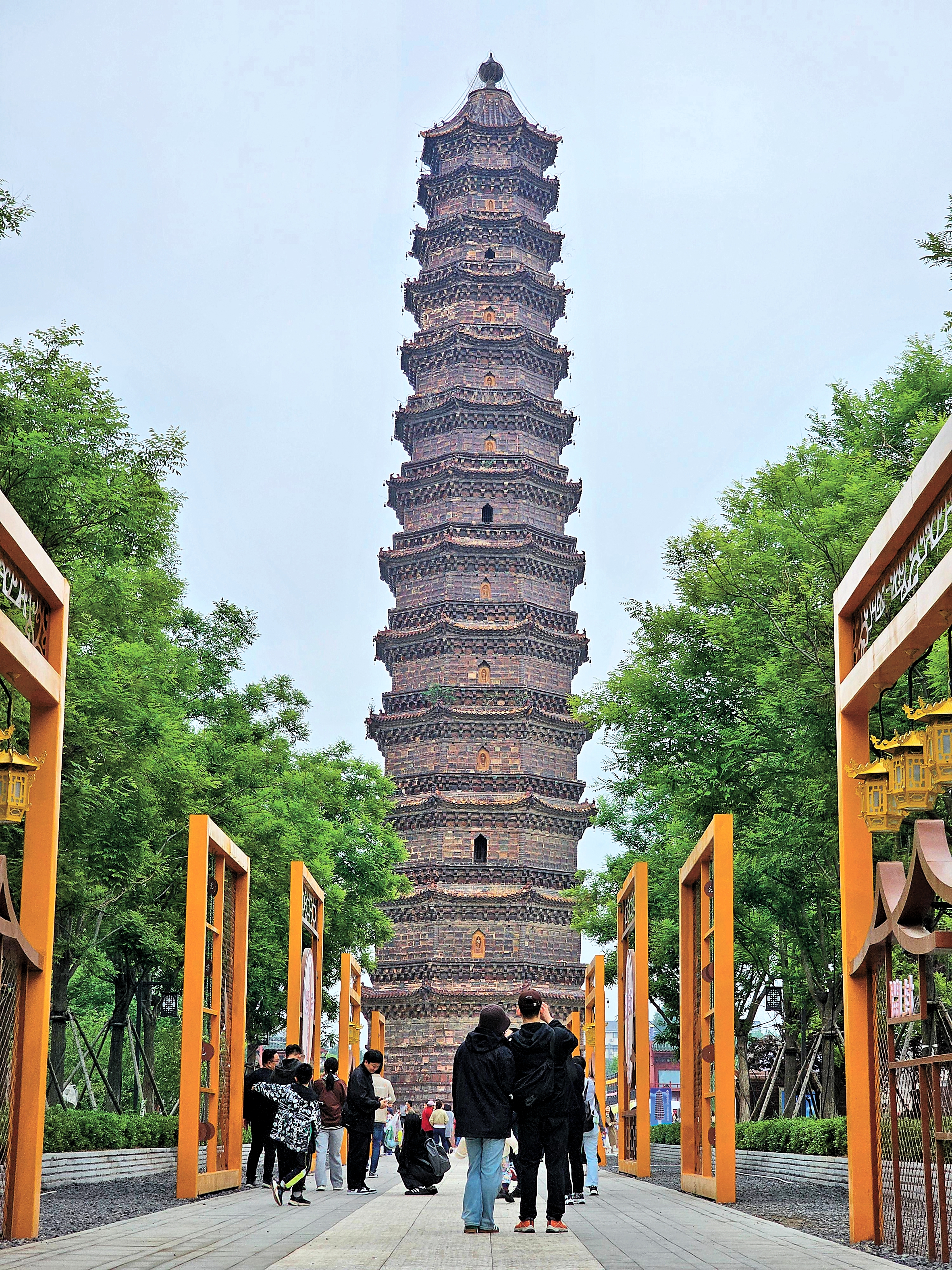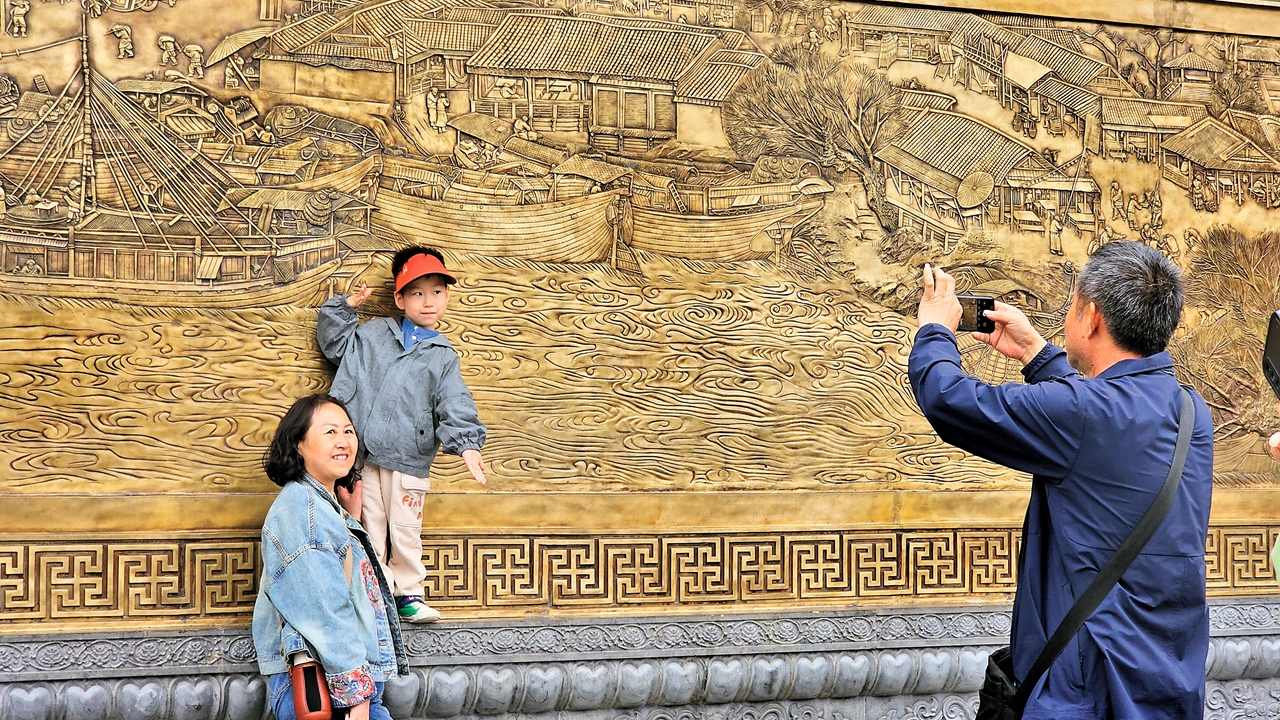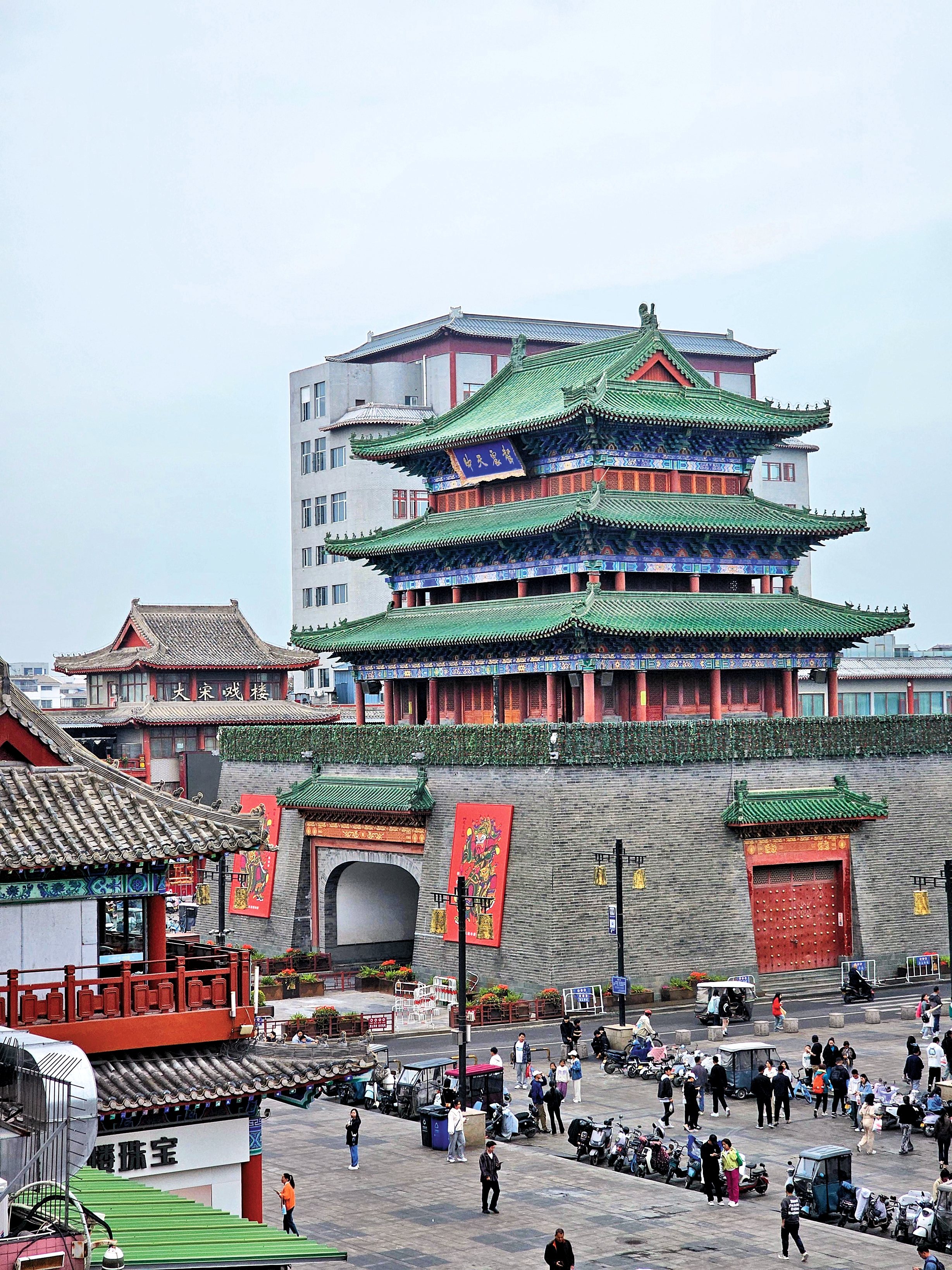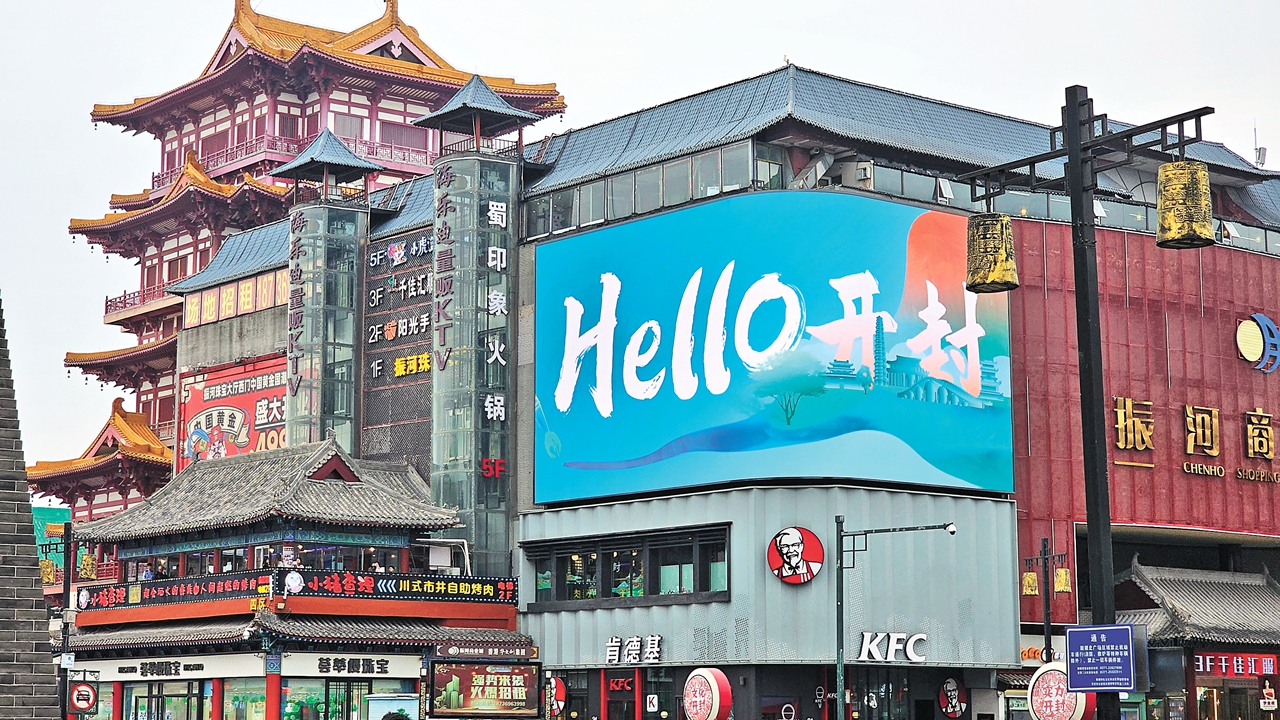Kaifeng: an ancient yet contemporary city
Writer: Chen Siqi | Editor: Lin Qiuying | From: Original | Updated: 2024-06-17

The Iron Pagoda is a relic from the Song Dynasty. Photos by Chen Siqi
As I hailed a cab from the railway station to downtown Kaifeng, about 70 kilometers away from Zhengzhou, capital city of Central China’s Henan Province, I was struck by the heavy traffic in the city center. Due to it being a public holiday, the sheer foot traffic in the city was unexpected.
The taxi driver mentioned that Kaifeng had experienced a surge in tourism thanks to the actress Zhao Mei, who gained popularity through the viral live show “Wang Po Matchmaking.” Many young people flocked to the Wansuishan Kungfu Theme Park where a daily show, featuring Zhao, aimed to match individuals with their possible other half.
However, Kaifeng is not only famous for its matchmaking culture but also for its rich historical legacy. The city, with a history spanning over 5,000 years, served as the capital of eight dynasties, reaching its zenith during the Song Dynasty (960-1279). The “Wang Po Matchmaking” performance was inspired by the classic Chinese novel “Water Margin,” dating from that historical period. The city aspires to be a destination for visitors to experience Song culture.

Visitors pose for a photo in front of a replica of the ancient painting “Along the River During the Qingming Festival” at Millenium City Park.
Millennium City Park
One of the iconic symbols of Kaifeng’s prosperity is the famous scroll painting “Along the River During the Qingming Festival.” This masterpiece, created by the Song Dynasty painter Zhang Zeduan, depicts bustling scenes of Kaifeng during the Qingming Festival.
Millennium City Park, spanning a construction area of over 30,000 square meters, was all recreated based on the traditional architecture depicted in that masterpiece.
To give visitors a time travel to when the painting was created, the park hosts 70 daily performances showcasing daily life during the Song period. These performances range from acrobatics, folk dances, and music once exclusively enjoyed by the royal family, to realistic war scenes.
One of the highly recommended shows is “The Great Song Dynasty: Reminiscences of the Eastern Capital,” featuring over 700 performers adorned in period costumes representing individuals from diverse backgrounds. This 70-minute performance includes nine scenes offering tourists a curated glimpse into the rise and fall of the Song Dynasty. Presented on a grand stage against the backdrop of a lake, pavilions, buildings and terraces, the show is a truly immersive live-action theater experience.

The Drum Tower is high on the list of must-visit destinations in Kaifeng.
Drum Tower and night market
Nearly every traveler visiting Kaifeng will snap a picture at Drum Tower Plaza with the backdrop of a screen reading “Hello 开封” (Hello Kaifeng). The plaza is located on a bustling business street around the ancient Drum Tower of Kaifeng.
As evening descends, the street transforms into a lively snack market, with numerous trucks orderly parked. Amid a medley of enticing aromas and lively vendor calls, visitors can be seen savoring various snacks, including Kaifeng-style dumplings, fried bean starch chunks, almond tea, and meat and vegetable skewers. For skewers, they have mutton, eggplant, and for the more adventurous, cicadas!
During the Song Dynasty, Emperor Qiande abolished the laws prohibiting business activities in the evening, thus initiating a boom in night markets. The Drum Tower night market started during that period. Today, there are other venues to explore, and a highly recommended one by the locals is the Heda night market, situated on the back street near Henan University, offering affordable and delicious local food.

Daxiangguo Temple is seen to the left of a mall, evidence to the fact that Kaifeng is an ancient city bustling with modern life.
Daxiangguo Temple
Leaving behind the bustling Drum Tower, we arrive at the tranquil Daxiangguo Temple.
Upon our arrival at the renowned Buddhist temple, we were greeted by a unique band performance by the monks.
Dating back to ancient times, Daxiangguo Temple has always cherished the tradition of Buddhist music, training professional musicians over hundreds of years. In June 2008, the Buddhist music of Daxiangguo Temple was recognized as a national intangible cultural heritage.
The temple, initially built in 555 and later reconstructed during the Qing Dynasty (1644-1911) after a devastating flood, stands as a testament to historical continuity.
Kaifeng Museum
The Kaifeng Museum, the largest in the city, houses over 80,000 valuable pieces in its collection that chronicle the city’s long history.
The interesting collections include techs discovered and utilized in the Song Dynasty and a stone monument relic inscribed with the names of each top chief executive of Kaifeng during the Song Dynasty, which had been displayed at the front of the ancient government office of Kaifeng.
During my visit to Kaifeng, a question puzzled me as to why this city with its extensive history features mostly replicas of ancient structures.
The museum docent gave me the answer. He said that wars and floods caused by the Yellow River led to the ancient city being buried underground.
Only two complete buildings have survived since the Song Dynasty: the Iron Pagoda and Po Pagoda situated at the northeast and southeast corners of Kaifeng, respectively.
Therefore, my final stop in Kaifeng was the Iron Pagoda, where I explored the traditional treasures in this historic yet contemporary city.